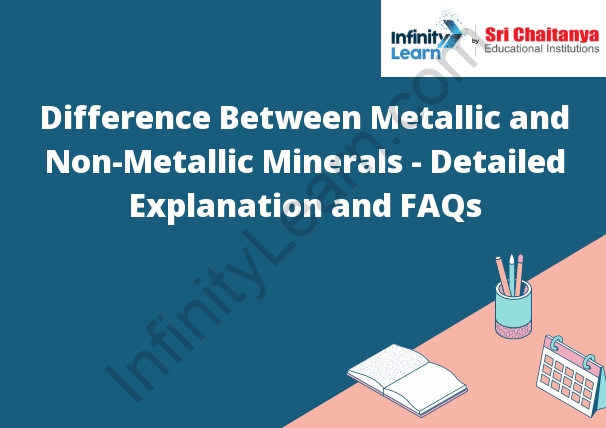Table of Contents
Introduction to Minerals; Minerals and their Classification
A mineral is a naturally occurring, inorganic, solid element or compound. Minerals are the basic building blocks of rocks and are found throughout the Earth’s crust. They are classified by their chemical composition and physical properties. Difference Between Metallic and Non-Metallic Minerals – Detailed Explanation and FAQs.
There are over 4,000 different minerals known to science, but only a few hundred of them are commonly found in rocks. The most common minerals are quartz, feldspar, and calcite.
Minerals have a variety of physical properties that can be used to identify them. These include color, streak, hardness, cleavage, and fracture.

What are Minerals?
Minerals are naturally occurring, inorganic, solid substances that have a characteristic chemical composition and a defined internal structure. They are usually crystalline, although some are amorphous. The atoms that makeup minerals are held together in a crystalline lattice. Minerals are formed through natural processes, such as crystallization from a molten state, or precipitation from a solution.
Metallic minerals are minerals that contain metals. These minerals are usually opaque and have a metallic luster. Examples of metallic minerals include iron ore, copper ore, and lead ore. Non-metallic minerals are minerals that do not contain metals. These minerals are usually translucent or transparent and have a non-metallic luster. Examples of non-metallic minerals include quartz, calcite, and halite.
Difference Between Metallic and Non-Metallic Minerals
There is a significant difference between metallic and non-metallic minerals. Metallic minerals are minerals that contain a metal atom, while non-metallic minerals do not. Metallic minerals are harder and denser than non-metallic minerals. Metallic minerals are also better conductors of electricity than non-metallic minerals. Non-metallic minerals are usually found in rocks, while metallic minerals are usually found in veins or deposits.
Difference Between Metallic and Non-Metallic Minerals – Detailed Explanation and FAQs.





